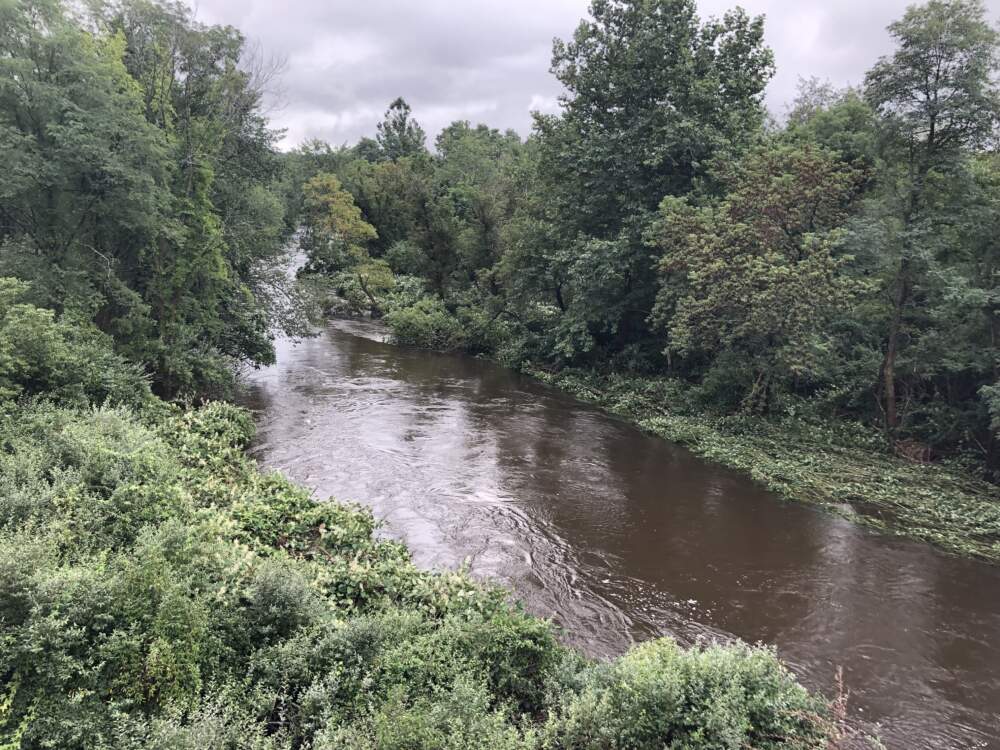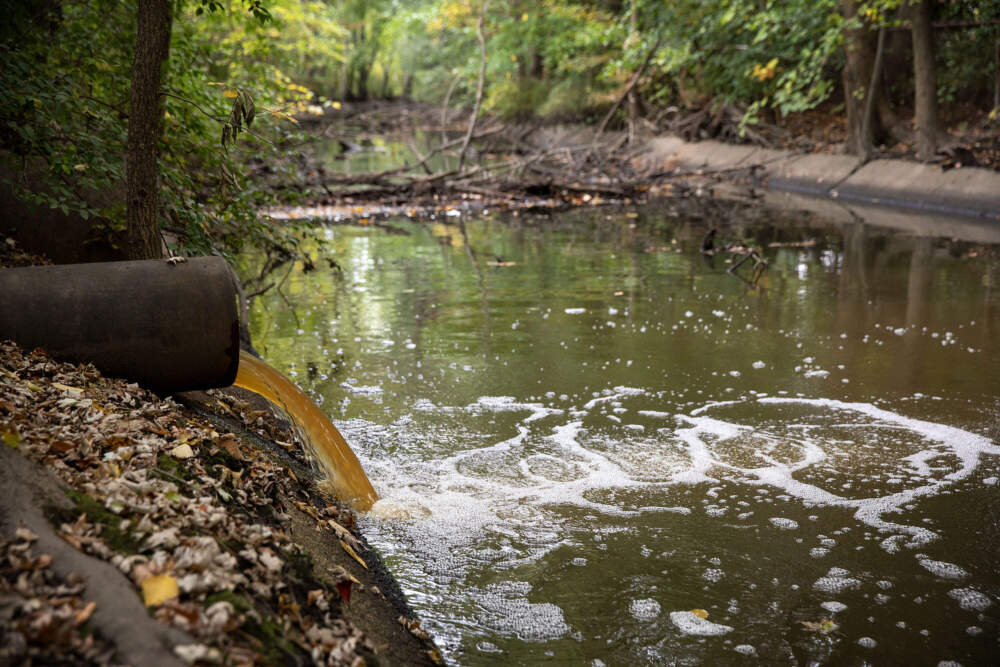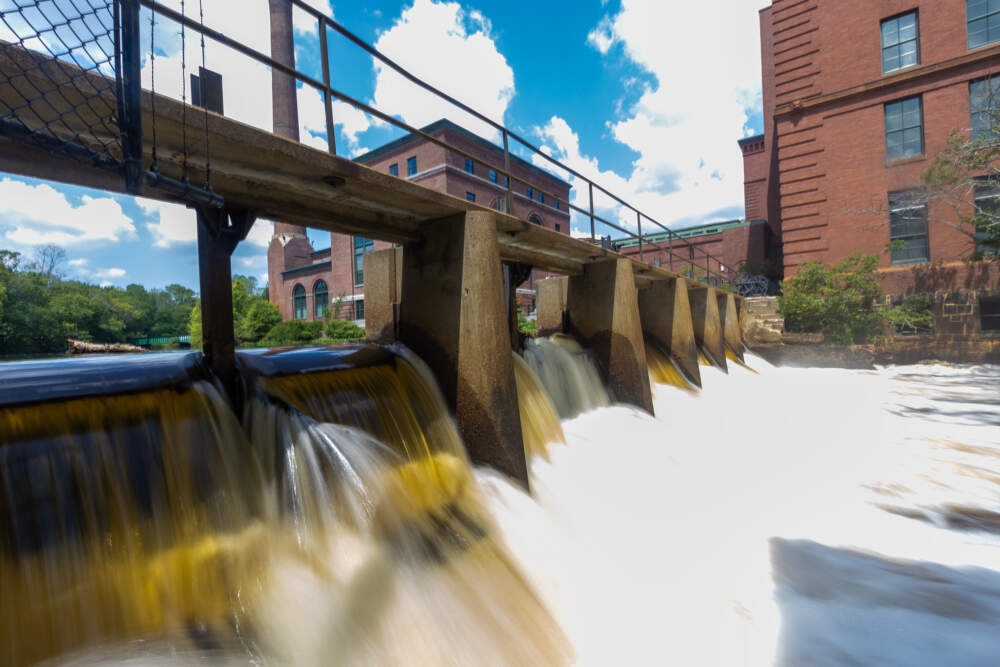Advertisement
Boston rivers are cleaner. But sewage, climate change threaten progress
School's out, and grades are in for Boston's three major rivers.
The Mystic, Neponset and Charles Rivers continue to get cleaner, according to an annual report card from a coalition of watershed groups. But the organizations' leaders warned that progress has slowed due to the worsening effects of climate change.
Since 2020, the groups have assigned letter grades to segments of the rivers based on water quality and rainfall data. The report card focuses on bacteria levels, and what's considered safe for swimming and boating.
Water quality grades for the three rivers in 2024 mostly followed positive trends from previous years. The watershed groups credited improved policy and infrastructure for better ratings in recent reports.
" Even though things aren't perfect, most of these rivers are pretty clean, and you should come out and take advantage of them," said Ian Cooke, head of the Neponset River Watershed Association, one of the groups that worked on this year's report.
But the groups also warned that increased extreme weather due to climate change will contribute to more frequent low water periods, toxic algal blooms, overflows of sewage combined with rain runoff, and stormwater pollution.
"The really big storms are getting bigger, but the small storms that happen a lot are getting more intense. And that tends to push more pollution off the land and into the rivers," Cooke said.

At the public release of the report card grades on Tuesday near the edge of the Neponset River in Hyde Park, state and local leaders commended the progress made over the last three decades.
"The thing that strikes me here as I read the report cards is how far we've come," said Heather Clish, policy director of the Massachusetts River Alliance. "It strikes me that where we have left is, of course, the harder stuff."
The work will require collaboration between state and federal partners to continue investing in water quality monitoring and issuing clean water permits, she said.
Massachusetts Department of Environmental Protection Commissioner Bonnie Heiple said the Healey-Driscoll administration is committed to this work.
" Rivers connect and sustain our communities. They're more than pretty places," she said. " They're working systems that provide drinking water, natural cooling, flood protection and green space that supports public health and wellbeing."
Advertisement

Mystic River
Grades for the main stem of the Mystic include A's and B's.
Upper Mystic Lake, a popular summer destination for swimmers and boaters, scored the highest grade in the watershed with an A. Despite the high score, the report notes that the lake's beach still closes after heavy rain due to unhealthy bacteria levels.
Smaller tributaries like Alewife Brook scored worse, earning a D+ grade. The brook received 19 millions gallons of sewer and rain water discharge last year, according to the report card. It regularly sees the highest volume of combined sewer overflow in Greater Boston.
All roads to clean water come through investment in infrastructure, said Patrick Herron, head of the Mystic River Watershed Association. That includes upgrading sewage systems and updating water permit requirements to curb stormwater runoff.

Neponset River
The ponds popular with swimmers, hikers and boaters in this river earned A and B grades. Willett and Turner Ponds in Walpole and Sprague Pond in Boston all received perfect A's.
But three segments of the Neponset — Unquity Brook in Milton, Traphole Brook in Walpole and Norwood, and Meadow Brook in Norwood — received D and F grades indicating they are unsafe for recreation most of the time.
According to the report, these low scores are due to pollution carried by stormwater runoff from streets and paved areas, plus aging sewer infrastructure.
The solution will take more than building a water treatment plant, said Cooke, of the Neponset River Watershed Association. Reducing runoff has to be a "collective effort," he said, between private property owners, municipalities that oversee public streets, and state and federal regulators.
Cooke said he's hopeful the U.S. Environmental Protection Agency will tighten standards under the federal Clean Water Act, noting it has consistently enforced the law across multiple administrations.
"Clean water is not really a liberal or conservative, Democratic, Republican kind of issue. So we're going to have to wait and see what EPA does," Cooke said.
In past years, the EPA has collaborated with the watershed groups to release the annual report card. This year the agency was billed as supportive, but not a partner.
" Cleaning up these urban rivers, that is a long haul. That takes commitment through complicated times, through times when we all have lots of resources, through times when we don't," said Ken Moraff, the water division director at the New England EPA, during public remarks.
Nationally, Trump administration officials have said they want to ease some environmental protections as part of a push to expand fossil fuel industries.

Charles River
Grades for segments of the Charles River were consistent with previous years. More urban, paved areas saw lower but improving grades due to stormwater pollution, while areas with more green space scored higher.
In the past two years, excessive rainfall has resulted in 63 known combined sewage overflow events, discharging more than 100 million gallons of sewage into the Charles.

Areas in the lower basin, upper middle watershed and Muddy River tributary saw slight improvements because of two drought years that decreased stormwater pollution, according to the report.
Significant improvements in water quality have followed fixes to sewage infrastructure, said Marielena Lima, river science program manager for the Charles River Watershed Association.
"But we have fixed all of the small things that we could fix. And so at this point, it really requires more resources and more willpower from the public to really push these changes that need to happen," she said.
